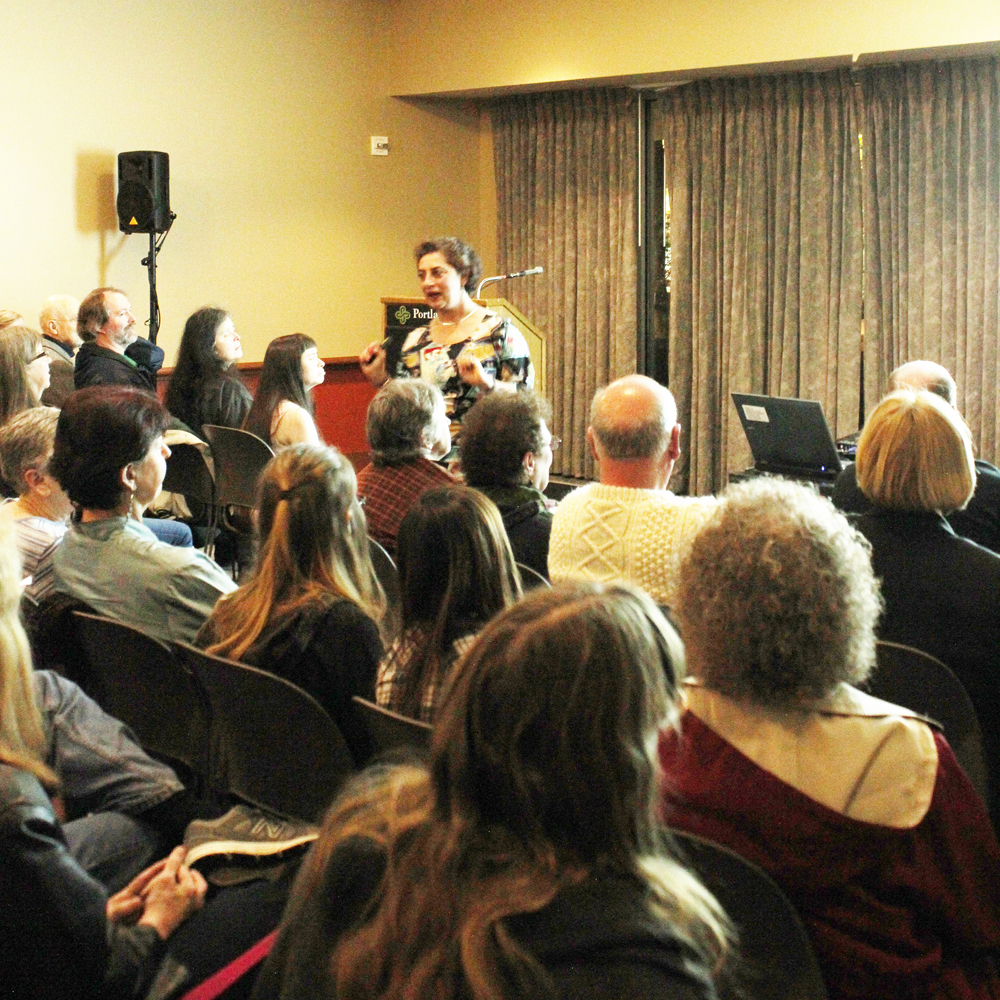It may seem like an intangible and difficult goal to reach: help stop global climate change. But the students and staff of a new senior capstone class know the goal is a worthwhile pursuit, and they are working to study and help reduce Portland State’s carbon emissions.
The pursuit of ending emissions
It may seem like an intangible and difficult goal to reach: help stop global climate change.
But the students and staff of a new senior capstone class know the goal is a worthwhile pursuit, and they are working to study and help reduce Portland State’s carbon emissions.
“Towards Carbon Neutrality at Portland State University,” offered for the first time this quarter, was designed for students to both learn about global climate change and make them direct participants in PSU’s actions toward achieving carbon neutrality-making sure the amount of carbon the institution uses is offset by use of renewable energy or investing in sustainable practices.
“If you really want to work toward carbon neutrality, you have to figure out where you are,” said Andrew Rice, the instructor of the course.
And that’s exactly what students in the class are doing.
Rice said that because this is the first time the class has been offered, the most important goal is to catalog and get “a big picture” of PSU’s entire emissions output. This means looking at the various ways that PSU causes carbon emissions, including transportation, electricity, natural gas and waste processing.
So far, after looking at the last three years worth of data, the class has preliminary numbers that show a general decrease in PSU’s emissions, putting last year’s carbon total at 46,240 metric tons.
That is still a lot of emissions for one institution, Rice said, and the class can help change that based on their report.
“We’re hoping that future classes will come up with concrete ideas to lower emissions at the university,” Rice said.
Creating dialogue
The idea for the course came up a year ago when Rice, a physics professor, talked with University Studies professor Jeff Gerwing, and David Erwin, the coordinator of PSU’s academic sustainability programs.
Rice said that a big part of the plan for the class was to get students involved with campus decision making around sustainability practices.
“It would be a shame not to involve students,” Rice said of the university’s carbon emissions policy. “We hope to really get some dialogue going between students and the administration.”
The plan seems to be working. Rice said that as the program developed, interest from the administration grew, especially from the PSU Sustainability Office and the Center for Sustainable Processes and Practices (CSP2).
Hannah Dondy-Kaplan is a graduate student who works at CSP2, and also works as a teaching assistant for the capstone class. She said she works primarily as an “integral connection” between CSP2 and the class, sharing information and helping students with their reports. She hopes that the work of the class will be put into action.
“This [report] will be a benchmark for the university to move forward on emissions policy,” Dondy-Kaplan said.
Students in the class say they have had a lot of help gathering information for the reports from various areas of PSU’s administration.
“Everyone has been really helpful,” said capstone student Jean Randolph.
After the students finish the emissions reports in early June, they will present their findings at the first annual “Campus Sustainability Celebration,” to be held Wednesday, June 4, in Smith Memorial Student Union, room 238, where leaders in the PSU community and administration will be present.
Multidisciplinary learning
Besides gathering information and creating a report, the capstone class also has a goal of teaching students about climate change and correcting misinformation.
Because the class is multidisciplinary and open to all majors, many students have little or no experience when it comes to science or research, Rice said.
“It’s been challenging. Most people haven’t done anything like this before,” Rice said. “We’ve had to build on the strengths of everyone, putting it all together.”
The 15-member capstone was divided into four groups, with each group tackling a different aspect of PSU’s carbon emissions such as transportation or waste. At the end of this quarter, all of the groups’ work will be put into the cohesive final report.
“The class really opened my eyes on a lot of issues,” said Randolph, a communications major. “I realize things now that I never have.”
Learn Morewww.web.pdx.edu/~arice/carboncapstone/421.htm
PSU emissions
PSU greenhouse gas emissions in total CO2 equivalent metric tons:(Preliminary results courtesy of Andrew Rice)
2004-05 – 46,4302005-06 – 47,2002006-07 – 46,240



